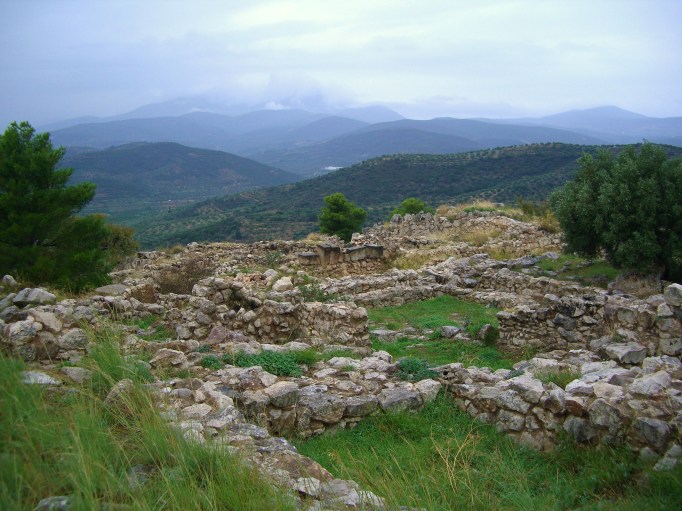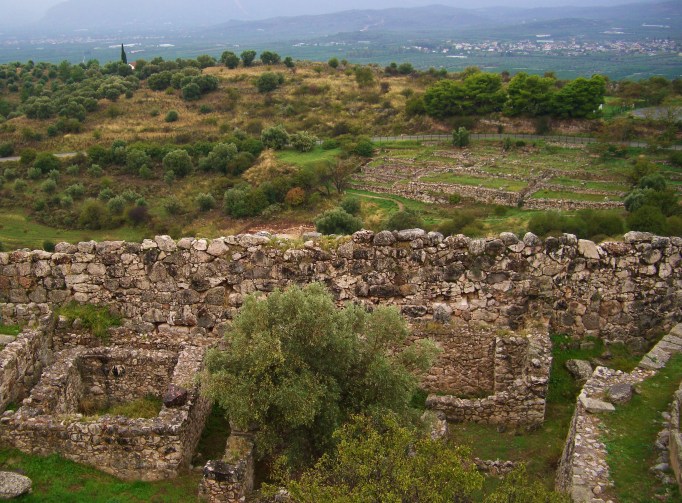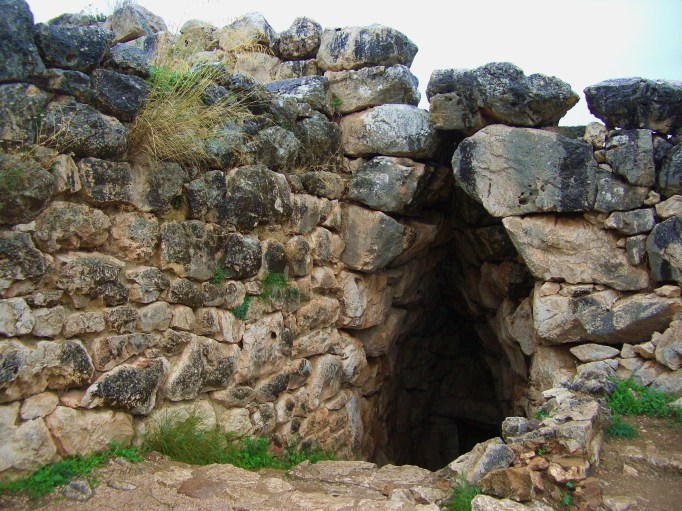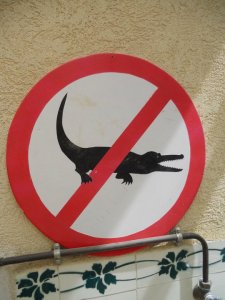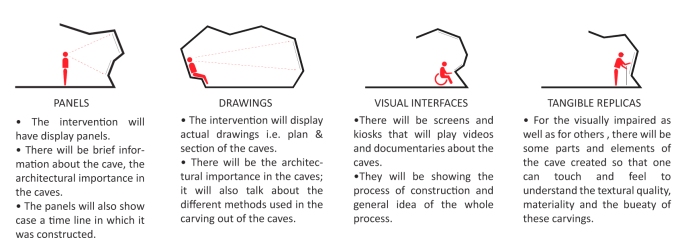: Uncategorized
Mount Athos: a timeless place
Chilly December winds hit the face as I embark on the first 8:45 am ferry to Mount Athos from the port of Ouranoupolis. Mount Athos is an enormous World Heritage Site, which is lawfully Greek, though ecclesiastically it is under the Orthodox Patriarchate of Constantinople (Istanbul). The boat journey starts with an ever-changing landscape that turns wilder and untouched. The boat makes a series of stops before reaching the final destination at the port of Dafni. On the way, there are these amazing sea-edged monasteries which have been there for over a millennium. They seem to be nothing less than the creation of a dream seller. The tall towers and the spires that perch out of wilderness harmonise with the raw untamed landscape.
After reaching Dafni, my class-mate Glenn Martin and I start our adventurous journey to the Monastery of Simonos Petra (Σίμωνος Πέτρα or Σιμωνόπετρα), which is multicultural in its composition, hosting monks from across the world. The walk to the monastery is a 6-hour trek with capturing views of the marine landscape with the sun cracking through the dark cold clouds and shining over the slate laid roofs of distant monasteries. On our way, we come across some kellis, clusters of quaint wooden and stone construction houses, which are self-sufficient micro-communities of monks.
Our destination, Simonos Petra, is an outstanding piece of architecture. This edge hugging seven storied monasteries is a perfect sojourn for me, as I have waited so long to see this sophistication of ancient architectural marvel. The guest rooms, on the mid-levels, have wooden cantilevered balconies that shoot out into the vast open sea. The construction details, long oil-lamp lit corridors, oversize gears to move the doors, the mechanical aqueducts and materials give us the illusion of being back in the medieval ages. The enchanted aura of this place is also due to the fact that many things in the monastery are still carried out in a traditional manual way.
These monasteries allow visitors to stay overnight, and during our four-day stay on Mount Athos we experience life in monks’ shoes. It is a fascinating schedule that starts with the 4:00 am service, when they venerate the treasured relics and portable icons in the dark candle lit church with shining gold-leaf interiors. This is followed by the first meal of the day at 8:00 am. The day ends with a service at 3:00 pm and the last meal of the day at 4:00 pm.
The monastery is a living organism: it sustains its monks providing all they need. We are fortunate enough to be allowed to see the book-making room – where the monks work on conserving and binding the precious manuscripts, and the stepped greens which are their source of organic and vegetarian diet. It is thought-provoking to listen to the stories of some of them who came to this island a long time ago and never left as they found their own self here. Each monk walking around in the pitch black cloak has a captivating story of how they reached this place.

A monk at work
Our journey then unfolds like a labyrinth of stories. Each monastery is a breathing storyteller, unique architecturally as well as in its functions. These monasteries are an excellent example of how a product of mind can fuse in so well with a product of nature. The uses of materials and the construction techniques, among other details, are a metaphor of these monks who are unique but simple. These monasteries teach us that we don’t need new materials: it is the idea that counts, the concept and its logical application that can lead to such brilliant long lasting examples of timeless construction.
Such an amazing lesson for professionals in our field like architects and conservators.
Photos by Siddhant Shah.
 Siddhant Shah is an Architect with Majors in Indian Aesthetics. He has worked with the State Archaeological Department (Mumbai) and has undertaken Heritage Volunteer training for UNESCO and ICOMOS. He is currently based in Greece, completing an MA in Heritage Management, and focuses on Management, Marketing and Disabled-Friendliness of Archaeological/Heritage Sites.
Siddhant Shah is an Architect with Majors in Indian Aesthetics. He has worked with the State Archaeological Department (Mumbai) and has undertaken Heritage Volunteer training for UNESCO and ICOMOS. He is currently based in Greece, completing an MA in Heritage Management, and focuses on Management, Marketing and Disabled-Friendliness of Archaeological/Heritage Sites.
Mycenae: a trip to the fortress
Basically for years I have dreamed about visiting the site of ancient Mycenae in Greece and so I may be a bit biased when it comes to describing about my experiences when I finally visited there. Actually this holds true for most ancient sites in Greece. But holding unnaturally high expectations of a site is not always a good thing as it can lead to disappointment, and I must admit I did put Mycenae on a pedestal. How could you not? This is the capital of Mycenaean civilisation, a civilisation that flourished throughout the entire Greek world from the 16th – 12th centuries BCE. It is also the kingdom of Homer’s Agamemnon, son of Atreus, king of kings.
For me it was such an eerie feeling walking up the hill toward that fortress; mixed emotions of excitement, awe and intimidation. The sheer size of the stone used in the construction of the wall is an incredible feat of engineering for the time (1350-1200 BCE), called Cyclopean Walls because it was thought that only giants could have moved such large blocks of stone.
When reaching the top of the site you really get a feel for the isolated location of the fortress surrounded by mountains in all directions. Built on the cliffs edge, Mycenae truly is an imposing fortification and a testament to the military mentality of the Mycenaean civilisation; a stronghold, which I wouldn’t say is aesthetically pleasing, rather it is the surrounding landscape that really gives Mycenae its beauty, with defence playing the pivotal role in the location choice for its construction.
It doesn’t take very long to walk around the whole site and there is pretty much one path that you follow as it loops around. It is hard to picture what the inside of the complex might have looked like in Mycenaean times, which included grave circles (which are actually dated back to the Middle Helladic period 17th – 16th c. BCE), a granary, houses, artists workshops and the palace itself at the peak. However some parts are remarkably well preserved if you consider just how old the place actually is.
There is also a tunnel (an ancient cistern) at the far end of the site which you can enter into. I’m not sure how far down it actually goes because it quickly becomes pitch black and we didn’t venture further for fear of bats or bears or the ghost of Atreus, but now I am rather curious if anyone could enlighten me.
There are many other important sites leading up to the acropolis such as the huge tholos tombs, some of which are located nearby and are well worth a visit as well.
Mycenaean architecture is such a stark contrast to the beauty and harmony of the classical Greek model of architecture that most of us envisage when we picture Greece. This just serves as one example of the variety and depth of human history that this country has to offer.
Photos by Glenn Martin.
 Glenn Martin has a BA (hons) in Ancient History and is currently a student of the MA in Heritage Management. He has strong interests in Classical Greek art, literature and architecture, and would like to focus on the conservation of heritage particularly through digital technology.
Glenn Martin has a BA (hons) in Ancient History and is currently a student of the MA in Heritage Management. He has strong interests in Classical Greek art, literature and architecture, and would like to focus on the conservation of heritage particularly through digital technology.
Esperanto, language of the world
From the HERMA student lecture series 2014-15
Language. The intangible part of any culture, ever changing, fluid and living entity. Language echoes the past, tells the present and reflects the future. It is the bridge and the tool which facilitates human contact and fosters understanding of others. It was these noble ideas, that Ludwik Lazarus Zamenhof was driven by when he created the artificial language Esperanto.
Zamenhof was born in 1859 in Bialystok, Poland (at the time Russian empire). Bialystok was a lively little town, where Jews, Poles, Belarusians, Germans and other ethnicities lived together. Zamenhof noticed quarrels arise easily between them and he was convinced language miscommunication largely contributed to this.
Thus, an idea started forming in his mind, which eventually led to creation of Esperanto. His vision was to create an international language, easy and logical, one which would help better mutual understanding and communication between people. In 1887, Zamenhof created the Unua Libro, detailing Esperanto. He, himself called it internacia lingvo (international language). The name Esperanto actually derives from the pseudonym doktoro Esperanto (Esperanto = one who hopes), under which Zamenhof wrote the first book.
The estimation is that today between 100,000 and 2,000,000 people worldwide fluently or actively speak Esperanto. Within this number there are approximately 1000 Denaskuloj or native Esperanto speakers, an interesting fact given that no country adopted Esperanto as its official language.
A question may be posed, considering Esperanto’s origin: can it be used to convey the complexity of culture and most abstract human ideas? The answer is a resounding yes. William Auld, Scottish poet, author, translator and magazine editor, wrote chiefly in Esperanto. His opus in Esperanto, particularly modernist poem La Infana Raso (The Infant Race), earned him a Nobel Prize in Literature nomination in 1999. He viewed Esperanto as
the expression of a common human culture, unencumbered by national frontiers. Thus it is considered a culture on its own (Auld 1998).
Beside Auld, notable Esperanto writers are Marjorie Boulton, Kalman Kalocsay, Nikolai Nekrasov, Claude Piron and many others. Other than creating original body of work in Esperanto, there have been many translation of the world literature into Esperanto. Auld translated Lord of the Rings by Tolkien, Sonnets by Shakespeare and Zamenhof himself translated The Old Testament.
Literature is not the only vehicle for Esperanto culture. It has been expressed through music, film, theatre plays and habits that Esperanto community shares. From pop to hip hop, Esperanto music covers it all. For a taste of it, one could tune into 24 hour Internet radio station Muzaiko. Some of notable Esperanto groups and musicians are La Perdita Generacio, JoMo, Dolcamar, Kaj Tiel Plu and Kajto.
Being it during Unversala Kongreso de Esperanto (World Congress of Esperanto) or number of other gatherings and occasions, Esperantists meet year round and socialize in their unique way. One thing that they earnestly try to avoid is to krokodili (talk crocodile, meaning to talk in languages other than Esperanto when they meet).
To dive into the world of this language and culture, one might consider a visit to two existing Esperanto museums: The Esperanto Museum of the Austrian National Library and Esperanto Museum, in Zaozhuang University in east China’s Shandong Province.
References
Auld, W. (1998). La Fenomeno Esperanto. Rotterdam: Universala Esperanto-Asocio.
Photos by Gorana Sekulic, unless otherwise stated.
 Gorana Sekulic is student in 2014-15 cohort of MA Heritage Management. She has a bachelor degree in Journalism and Communication, as well as work experience in the fields of journalism, film and gender equality. She is interested in seeing how communication and language can work together with culture and heritage to make it more visible.
Gorana Sekulic is student in 2014-15 cohort of MA Heritage Management. She has a bachelor degree in Journalism and Communication, as well as work experience in the fields of journalism, film and gender equality. She is interested in seeing how communication and language can work together with culture and heritage to make it more visible.
Heritage for All: differently-abled and heritage accessibility
The concept of “Heritage for All” started forming in my mind after the Hands-on Site Workshop with disabled (but I refer to them as differently-abled) at the UNESCO World Heritage Site of Sanchi Stupa in Madhya Pradesh (India).
Sanchi is one of the most important religious and archaeological sites in the Buddhist landscape and attracts thousands of visitors across the globe. Sanchi, called Bota-Sriparvata in ancient times, characterises for having remarkable specimens of Buddhist art and architecture right from the early Mauryan period (c. III century b.C. – XII century A.D.), and it is famous in the world for the monolithic Ashokan pillars, stupas, temples, monasteries, and sculptural wealth.
As reported by BBC (The Travel Show), 15% of the world population is differently abled, and access to heritage sites can be very difficult for them. During the workshop at Sanchi a very important question arose in my mind: Who is really disabled? Is it a differently-abled human or is it the technology that “abled” people are not actually able to develop for him/her? In a world where technology is taking over all major domains of existence, heritage should not be left out.
For example, why should a pregnant woman not be able to visit a heritage site only because it has a hilly terrain? Or why should a visually impaired person not be able to enjoy the magnificence of a monument? As an architect, I firmly believe in the importance of experiencing a site and taking that experience back with you. On this understanding, together with my two colleagues Ar. Jay Kapadia (M.Arch Urban Design) and Ar. Siddhi Desai Kapadia (M.Arch Urban Research), I designed a proposal to make the World Heritage Site of Ellora Caves universally accessible. The proposal took part in a competition and was awarded second prize by the Archaeological Survey of India and UNESCO.
The proposal has several interesting ideas. Since we believe that engagement with the site is the primary source of knowledge, we proposed to create tangible replicas of certain sculptures, so that they could be touched and understood by the visually impaired (which even include people who just look at things without really understanding them).
We also designed interactive info-games for kids and adults. Playing a game which imparts information has a great impact on the learning process, as one interacts with the site in an entirely new way. So we created tablet apps, interactive maps and audio visuals to be placed at various nodes, where the geography made access difficult.
Thus in my outlook as a heritage manager it will be my prime duty to engage the audience and make sites as interactive as possible for all visitors so as to enrich everybody’s experience.
Images and photos by Siddhant Shah.
 Siddhant Shah is an Architect with Majors in Indian Aesthetics. He has worked with the State Archaeological Department (Mumbai) and has undertaken Heritage Volunteer training for UNESCO and ICOMOS. He is currently based in Greece, completing an MA in Heritage Management, and focuses on Management, Marketing and Disabled-Friendliness of Archaeological/Heritage Sites.
Siddhant Shah is an Architect with Majors in Indian Aesthetics. He has worked with the State Archaeological Department (Mumbai) and has undertaken Heritage Volunteer training for UNESCO and ICOMOS. He is currently based in Greece, completing an MA in Heritage Management, and focuses on Management, Marketing and Disabled-Friendliness of Archaeological/Heritage Sites.
Diazoma: bringing ancient theatres back to life
An interview with Stavros Benos, guest speaker of our student lecture series
In ancient Greece, a diazoma was the passage between the upper and lower seating areas of a theatre. Nowadays, it is also the name of an NGO aiming to enhance and bring ancient theatres back to life. Diazoma was born in 2008 to publicize the beauty and the values of the ancient theatres by organizing events, adopting monuments, and opening bank accounts “money boxes” for each ancient venue. In a country unused to for-profit organisations’ involvement in heritage management, Diazoma seeks to persuade the economic powers of Greece to contribute to this effort as sponsors. So far, the NGO has been able to fundraise a total amount of nearly 40 million euros for the protection and promotion of ancient Greek theatres.
We had the pleasure to have Stavros Benos, Diazoma’s director, as a guest speaker in our student lecture series.
Mr Benos, why theatres?
Theatres have always had a strong symbolic value for Greece. In the VI and V cent. b. C. Greece witnessed three breakthroughs: science – which freed us from superstition, philosophy – which made us think about our role in the universe, and democracy. And then theatre was born. Theatre was never just entertainment, it was indeed a synthesis of all those crucial changes. It was also the apotheosis of democracy, for many fundamental decisions about social life were made there, and the very administration of justice took place there. Theatres were the mass media of the time. But Diazoma’s focus on ancient theatres was also a strategic decision: as any ancient town had a theatre, we knew that if we worked and succeed with one venue, the others could follow easily.
Diazoma managed to involve for-profit organisations as sponsors. How do you approach them and how do you deal with their expectations?
When we approach big companies, we always present them our business plan (which can be found on our website) with the support of archaeologists. We often have local “allies”, such as scholars or municipalities that want Diazoma to operate in their areas. These people can act as intermediaries between us and the potential donors. As for Diazoma’s relationship with donors, it is important to establish an ideological relationship between the big for-profit organisations and the heritage they are willing to give funding, so that they can understand how much they can gain in terms of reputation.
How do you manage volunteers?
We have about 1000 members and they are all volunteers. Generally, Diazoma prefers to adopt a decentralised model for volunteers, as it is more dynamic. Schools are a precious source of voluntaries; for example, the power point presentation of the theatres has been prepared by high school students, and now they also plan to write the Wikipedia entry for Diazoma.
Projects for the future?
At the moment, we are working on the creation of a cultural itinerary for the ancient theatres of Epirus. Greece needs to develop more branded cultural tourism products, and Epirus’s itinerary is a pilot project that could be used as a model for itineraries in other regions of the country. The project is promoted by the Ministries of Development, Culture, and Tourism, and the Greek National Tourism Organisation, and it is implemented by the Region of Epirus and Diazoma.
A cheeky question: if you hadn’t been in politics for many years, do you think Diazoma could have achieved these results?
I don’t think so.
 Students of the MA in Heritage Management 2014-15
Students of the MA in Heritage Management 2014-15
A varied bunch of 22 students from all over the world, with very different interests and personalities, but sharing a common passion for heritage. We are learning the best practices in heritage management and trying to keep the heritage values always at the core of our decisions.
Digital Nafplio's Brittany K.L. Mabry Interview
1- What makes you passionate about heritage management?
I approach heritage management as one who simply believes that there is purpose behind objects and structures that have been left to us by antiquity; deciphering those purposes is the absolute source of my passion for heritage management. Material culture and monuments, like ancients texts, are a means by which our human ancestors communicate the ideals that they believed ought to endure from science, to engineering, to art.We have so manytangible examples of mankind’s brilliance, skill, and resilience across time, and now have sophisticated means to digitally retain them and examine them in ways we have never had before.I believe that the best and most lasting accomplishments of humanity through the ages ought to be preservedfor future generations and am delighted to be one among those who are privileged with the task.
2- How did you learn about the IHC, and what was your first experience with the IHC?
Because archaeological discovery had captivated my imagination from a very young age and thus continues,after spending a few years studying geospatial technology I sought to integrate my interests by examining the means by which these technologies might be used to answer archaeological questions. I thought the best introduction to this field to come through in an archaeological field school, and I had been following the field programs operated by the Center for Advanced Spatial Technologies (CAST). I was originally interested in a geophysics field school in Egypt but, as fate would have it, that field school ended abruptly on account of the Arab Spring. I saw that there was a similar field school using laser scanning in Eleusis, Greece, offered by the Initiative for Heritage Conservancy, and thought it was the perfect alternative.
I had formerly been unfamiliar with the IHC, but my introduction to it through the Eleusis Digital Recordation field school ultimately proved to be not only very beneficial but life-changing. I took part as a student in the third and final field school at Eleusis, an IHC project designed to digitally record the extant structures at the site of the famous ancient Eleusian Mysteries. It must be said that Greece is so inherently beautiful that simply being there was rewarding enough—the experience could only be memorable. The modern town of Elefsina offers so much intrigue by blending contemporary urbanism with ancient structures and heritage throughout. The natural environment, complete with magnificent vistas of neighboring Salamis island, make it no small wonder that Elefsina had been long inhabited and deemed sacred; anyone seeing it today would be compelled to investigate as well as preserve its heritage.
The field school itself was invaluable, but by nature had limitations in that we students came from varying backgrounds and skill levels, and presenting us with this complex technology, if done properly, is aformidable and time-consuming task. However, recognizing this, and because we cared so much for the mission of the field school and what it represented, my colleagues and I forged strong relationships while there with a resolve to continue to make improvements on the field school. I knew that I wanted to be a part of it.
3- What does the IHC offer you, and what does it propose to offer the world?
I could never have expected how extraordinarily dear and valuable all IHC alumni are to the IHC field programs. Because one of the stated aims of the IHC is to create and develop human resources, upon graduating from the field school we (my colleagues and I)became those human resources and were invited to maintain our involvement with the IHC. When I was approached by the IHC to consider an instructional role in the next field school program, I immediately reached out to Leica Geosystems HDS in California to propose an internship that might better prepare me for this role. I was accepted for an internship, where I stayed for several months, and while there was responsible for authoring a few documents, one of which specifically addressed managing large laser scanning projects. The following spring I joined a graduate program at the University of Arkansas in Geography with an emphasis on geomatics.Those experiences culminated in my taking on the role of head instructor for theIHC.Digital Historic Nafplion field school.
Through my appointment the IHC offers me the opportunity to interact directly with conservators, urban architects, surveyors, archaeologists, and others interested in heritage management and preservation in order that we may co-operatively develop and execute strategies where we apply, in a meaningful way, these technologies to preservation.
The IHC wants first to find and cultivate students’ academic interest and skills in heritage management. I think, in all honesty, that what the IHC seeks most is people who care—students and professionals from all over the globe—because it recognizes that they are the ones who will be the most pro-active in the world of heritage management. People who have an instinctive curiosity about technology coupled with an appreciation for material culture will not only best apply these technologies to preservation, but also use them as invaluable tools to explore and examine our heritage. The IHC offers exactly that to all who are interested. Greece is a case study in which to learn and develop good heritage management practices, but for the IHC it is not only about Greece or Greek heritage—it’s about good heritage management practices which are learned here but are applicable to any site around the world. That is essentially the IHC difference, that’s our global mission.







